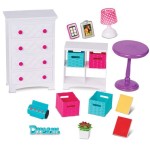How To Eliminate Odors From Furniture
Furniture, integral to home comfort and aesthetics, can unfortunately become a repository for unwanted smells. These odors can emanate from various sources, including pet accidents, food spills, smoke exposure, mold growth, and even prolonged storage. Addressing these unpleasant smells requires a strategic approach, combining appropriate cleaning techniques with odor-neutralizing agents. This article presents a comprehensive guide on how to effectively remove odors from furniture, ensuring a fresh and inviting living environment.
Before embarking on any odor removal process, identifying the source of the smell is crucial. Determining the origin allows for targeted treatment, maximizing effectiveness and preventing recurrence. Carefully inspect the furniture, paying attention to areas where spills are likely to occur, where pets frequent, and where moisture may accumulate. Using a flashlight can aid in identifying hidden stains or areas of mold growth.
Once the source is identified, consider the type of material the furniture is made of. Different materials require different cleaning methods and products. Upholstered furniture demands a different approach than wooden furniture, and leather requires specialized care. Using the wrong cleaning agent can damage the furniture, exacerbating the problem or creating new ones.
Initial Steps for Odor Removal: Ventilation and Surface Cleaning
The first line of defense against furniture odors is thorough ventilation. Opening windows and doors allows fresh air to circulate, helping to dissipate lingering smells. Direct sunlight can also act as a natural deodorizer, although caution should be exercised to avoid prolonged exposure, which can fade or damage certain fabrics and finishes. Place the furniture outdoors, if feasible, for several hours, ensuring it is protected from inclement weather.
Following ventilation, a thorough surface cleaning is essential. For upholstered furniture, vacuuming is paramount. Use a vacuum cleaner with appropriate attachments to remove loose debris, dust, and pet hair that may be trapping odors. Pay close attention to crevices and seams where dirt and odors tend to accumulate. A stiff brush attachment can be helpful for dislodging stubborn particles.
For wooden furniture, dusting with a microfiber cloth is recommended. Avoid using harsh chemicals or abrasive cleaners that can damage the finish. A mild soap solution can be used for more thorough cleaning, but it is imperative to test the solution on an inconspicuous area first to ensure it does not cause discoloration or damage. Wipe down the surface with a damp cloth and immediately dry it with a clean, dry cloth.
Leather furniture requires specialized cleaning products. Use a leather cleaner and conditioner specifically designed for the type of leather in question. Follow the manufacturer's instructions carefully, and always test the product on an inconspicuous area before applying it to the entire piece. Regular conditioning helps maintain the leather's suppleness and prevents it from absorbing odors.
Addressing Specific Odors: Targeted Treatments
After initial cleaning, specific odor removal treatments may be necessary depending on the source and severity of the smell. Several effective methods are available, each targeting different types of odors.
Baking Soda: Baking soda is a natural deodorizer that absorbs odors without leaving a strong scent. For upholstered furniture, sprinkle a generous amount of baking soda over the affected area and let it sit for several hours, or preferably overnight. Vacuum the baking soda thoroughly afterwards. This method is effective for absorbing pet odors, smoke smells, and mild mildew odors. For wooden furniture, placing an open box of baking soda nearby can help absorb ambient odors.
Activated Charcoal: Similar to baking soda, activated charcoal is a powerful odor absorber. Place bowls of activated charcoal near the furniture or inside drawers and cabinets. Replace the charcoal regularly, as it becomes saturated with odors. Activated charcoal is particularly effective for absorbing musty smells and odors associated with mold growth.
Vinegar: White vinegar is a natural disinfectant and deodorizer. Dilute white vinegar with water in a spray bottle and lightly mist the affected area. Test the solution on an inconspicuous area first to ensure it does not cause discoloration. Allow the furniture to air dry completely. Vinegar is effective for neutralizing pet odors, smoke smells, and mildew odors.
Enzyme Cleaners: Enzyme cleaners contain enzymes that break down organic matter, such as pet urine, feces, and vomit. These cleaners are particularly effective for removing odors associated with pet accidents. Follow the manufacturer's instructions carefully and apply the cleaner liberally to the affected area. Allow the cleaner to sit for the recommended time, then blot the area dry with a clean cloth. Enzyme cleaners are generally safe for use on most fabrics, but it is always advisable to test the product on an inconspicuous area first.
Steam Cleaning: Steam cleaning can be an effective way to remove odors from upholstered furniture. The high temperature of the steam helps to kill bacteria and break down odor-causing molecules. Use a steam cleaner with appropriate attachments and follow the manufacturer's instructions carefully. Ensure the furniture is thoroughly dry after steam cleaning to prevent mold growth. Steam cleaning is not suitable for all types of fabrics; always check the manufacturer's recommendations before proceeding.
Professional Cleaning: For stubborn or pervasive odors, professional cleaning may be necessary. Professional cleaners have access to specialized equipment and cleaning solutions that can effectively remove odors without damaging the furniture. They can also identify underlying issues, such as mold growth, that may be contributing to the odor problem.
Preventative Measures: Maintaining Odor-Free Furniture
Preventing odors from accumulating in furniture is just as important as removing them. Implementing preventative measures can significantly reduce the likelihood of future odor problems.
Regular Cleaning: Regular cleaning is the most effective way to prevent odors from building up. Vacuum upholstered furniture regularly, dust wooden furniture frequently, and clean spills immediately. Regular cleaning removes dirt, dust, and debris that can trap odors.
Pet Care: If you have pets, take steps to prevent them from urinating or defecating on the furniture. Provide them with designated areas for urination and defecation, and clean up any accidents immediately. Use pet-friendly cleaning products to remove odors and stains.
Moisture Control: Moisture promotes mold growth, which can lead to unpleasant odors. Keep humidity levels in your home under control by using a dehumidifier or air conditioner. Repair any leaks or water damage promptly to prevent moisture from accumulating in furniture.
Fabric Protection: Applying a fabric protector to upholstered furniture can help prevent stains and odors from penetrating the fabric. Fabric protectors create a barrier that repels liquids and prevents them from being absorbed. Reapply fabric protector periodically, following the manufacturer's instructions.
Proper Storage: When storing furniture, ensure it is clean and dry before placing it in storage. Wrap the furniture in protective coverings to prevent dust and moisture from accumulating. Store furniture in a well-ventilated area to prevent mold growth.
Air Purifiers: Air purifiers with HEPA filters can help remove airborne particles that contribute to odors. HEPA filters trap dust, pollen, pet dander, and other allergens, reducing the overall odor level in the room. Choose an air purifier with an activated carbon filter to effectively remove odors.
By following these guidelines, individuals can effectively remove odors from furniture and maintain a fresh and inviting living environment. Careful attention to detail, appropriate cleaning methods, and preventative measures are crucial for success.
Addressing odors promptly and effectively not only enhances the aesthetic appeal of the furniture but also contributes to a healthier and more comfortable living space for all occupants.

How To Get A Musty Smell Out Of Furniture Once For All

How To Remove Stinky Smells From Wood Furniture

How To Get A Musty Smell Out Of Furniture Once For All

Get The Smell Out Of Furniture Renovated Faith

How To Get Smell Out Of Furniture 7 Ways Taskrabbit Blog

How To Get A Musty Smell Out Of Furniture Once For All

How To Remove Musty Smell From Old Furniture Delightfully

7 Ways To Get The Stink Out Of Old Furniture Youtube

Cleaning Smelly Thrift Store Furniture Makely

How To Clean A Couch That Smells Eco Cleaning Nyc
See Also








